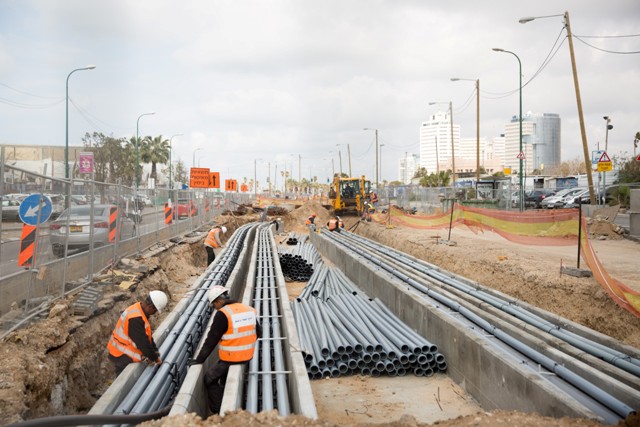Infrastructure segment is set to make a strong recovery in 2021
by Urvisha H. Jagasheth, Research Analyst, CARE Ratings
The Infrastructure sector is a key driver for the Indian economy and is highly responsible for propelling India’s overall development. Over the years the Government has shown relentless focus on improving growth by pushing infrastructure development. Good quality infrastructure aids manufacturing competiveness, supports growth, generates employment and improves quality of life.
Before the onset of the pandemic the Government of India had unveiled the National Infrastructure Policy covering various sectors and regions indicating that it is relying on an ‘infrastructure creation’ led revival of the country’s economy. The NIP which covered rural and urban infrastructure entailed investments to the tune of Rs.102 lakh crores to be undertaken by the central government, state governments and the private sector during FY20-25. Now with that the economy has almost opened up with most of the migrant workers too are returning, infrastructure development will be relied upon to propel the Indian economy from the current slowdown.
Road construction is the critical sub-segment of infrastructure that is expected to be a driver for economic activity and employment creation. The Ministry of Road Transport and Highways has set a target of constructing roads worth Rs.15 lakh crores in the next 2 years. The length of national highway construction being awarded in the first eight months of FY21 (at 6,764 kms) has been double that of the same period of FY20. The pace of highway construction has also picked up pace in recent months and the cumulative construction as of November’20 was 4% higher than that in November’19. Despite these improvements, there has been a decline in the road projects announced/ constructed at the state level. State road projects (including rural and district roads) typically accounts for the bulk of the road constructions (around 98%). Going forward, road construction would continue to experience a divergence at the central and state level. While the momentum of highway construction by the central government is expected to be sustained, the constrained finances of the state governments could see them cutting down on the expenditure to be incurred towards the sector as the pandemic led disruption has severely stressed the finances of state governments and has led them to cut down their budgeted capital expenditure.
The Real Estate Sector too plays a vital role in the economic development of the country and it is estimated that the overall employment generation in the economy due to additional investment in the housing/construction sector leads to approximately 8 times employment through backward & forward linkages. The sector also supports more than 350 ancillary industries in the country. Real Estate construction had witnessed a temporary halt in ongoing projects which had led to the large scale reverse migration of labourers and disruption in supply chain of materials. There has been resumption in construction activities but going forward, new project launches in the industry are to be impacted as developers focus on completion of under construction properties and clearing their existing inventories. Moreover, restricted lending by banks and other financial institutions will also deter developers from announcing new projects. However the additional outlay of Rs 18,000 crore for the urban housing scheme (PMAY-U) is expected to help complete real estate projects in the affordable housing segment. PMAY-U scheme has been gaining traction and now with the extension of the CLSS, affordable housing and midprice houses is expected to witness better demand and early recovery as against units with high ticket size. Temporary increasing of the differential between circle rate and agreement value is also expected to benefit the sector (this is only for first time homebuyers purchasing houses up to Rs 2 crore). Even with the Indian government announcing the Affordable Rental Housing Complex (ARHC) scheme along with other investments in the industrial segment in a renewed push towards ‘Atmanirbhar Bharat’, the forecast for 2021 therefore opens up exciting investment opportunities in the real estate sector. However demand for luxury projects will continue to remain depressed.
Commercial Real Estate had been in a disturbed state with the onset of the pandemic especially commercial leasing. Since mid-March in order to maintain social-distancing, companies have announced a work-from-home policy to safeguard their employees. This has negatively impacted office leasing and even in the case of leasing of retail spaces it has been adversely impacted with rentals being not paid for almost half a year on account of mandated closure of malls and consequent waiver of rentals for occupiers mainly restaurant chains, and multiplexes. Going forward, commercial Real Estate is now witnessing a structural shift as many companies are adapting to remote working and have found it cost effective to have employees working from home. In the case of mall leasing, even after resumption, malls have been witnessing very limited footfalls and the outlook for the segment thus continues to remain negative especially with growing popularity of e-commerce.
Cement demand is closely linked to the overall economic growth, particularly of the housing and infrastructure sector. Increasing demand from affordable housing and construction work for other government infrastructure projects like roads, metros, airports, irrigation, etc, are demand drivers which support cement demand. The cement industry had witnessed a blip during the first few months of the year as the nationwide lockdown had come at the time when construction activities were at its peak. But vibrancy in the rural markets has supported cement demand to such that there wasn’t a complete demand washout. Going forward cement demand-supply is expected to be positive in the next fiscal as demand is slowly improving due to pick-up in government spends on infrastructure and affordable housing along with rising rural consumption which has led to an increase in production as well. In fact most of the manufacturers who had cut down or deferred capacity expansion plans have rolled back these cutbacks and announced further guidance on the same.
Steel sector too was impacted due to Covid-19 related issues and however production has rebounded and returned to year-ago level in the last two months. Demand for steel was initially led by pick up in rural sector this was followed by increase in demand from the automobiles sector ahead of the festive season. Going forward, steel demand recovery is expected to be driven by government led infrastructure projects like road, metro rail, oil & gas infrastructure projects, renewable energy projects, etc.
Construction Equipment was severely affected during the lockdown period however there has been an uptick in order inflow in the December 2020 quarter mainly led by capex from public sector companies in mining and construction. Order inflow for capital goods companies are expected to gain momentum in 2021 on the back of government led spending on railways, roads, renewable energy projects and transmission & distribution segments. Private sector investments will continue to remain weak expect for some sectors like drugs and pharma, IT, renewable power and electronics which are currently investing in new capacities.
Though the picture seems mixed at the moment, the Infrastructure segment is set to make a strong recovery in 2021 and government policies towards infra-creation will be key to ensure time-bound creation of world class infrastructure in the country. While there have been some signs of green shoots, economic recovery remains fragile and the upcoming Budget must prioritise funding for infrastructure creation especially since the states which contribute almost 35-40% of the total infrastructure investments in India have high fiscal deficits and are hit with liquidity issues. Therefore, the Centre needs to shoulder more of the burden of raising funds to drive infrastructure investments and projects. Infrastructure sector should be sanctioned on priority in the Budget because any delay will impact the possibility of a faster economic revival.





